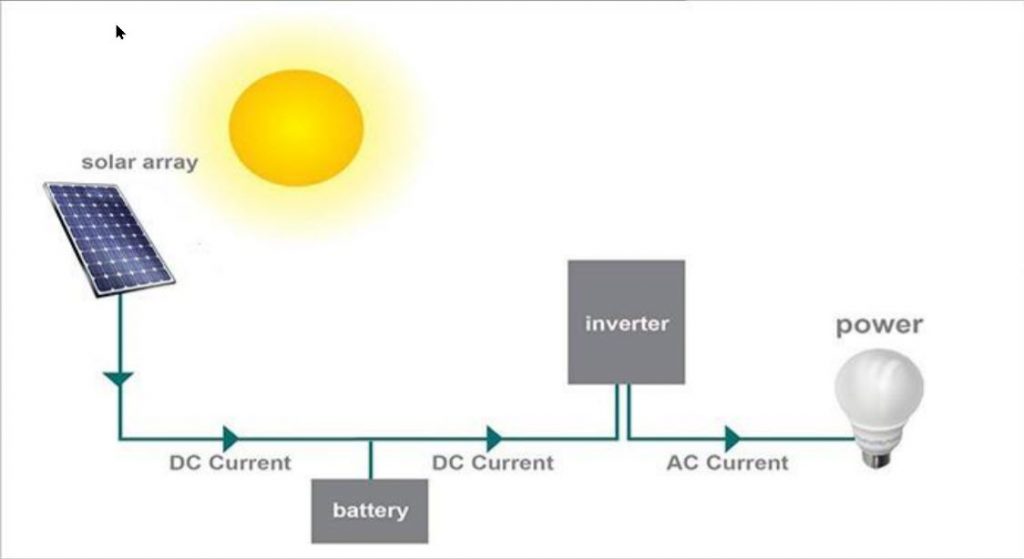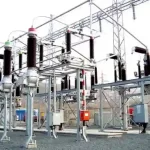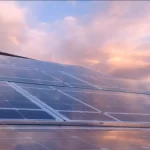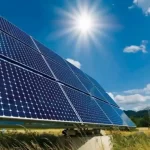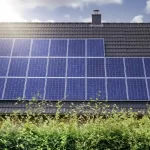If you want to buy a solar system for net metering purposes then there are some simple steps that you need to follow.
Above all, you have to make sure whether you are eligible for the setting up net metering and also that you MUST fulfill all the basic requirements of DISCO, NEPRA and other legal disclaimers.
You need to decide whether you want to buy a solar system from a common vendor or an experienced company holder.
Also, you have to think that you will be able to fulfill all the net metering rules and regulations after installing this particular system.
You can purchase the solar system from any solar association or company that designs these systems for net metering.
Contents
How to Buy a Solar System from Your Vendor/ Installer?
If you have made up your mind to buy a solar system from any vendor or installer, there are five things you should consider before you make the decision.
- What type of material do you want to use?
- From whom do you want to buy the solar system, a company, or a random vendor?
- Keep the cost factor in your mind.
- The system that the applicant wants to install will meet the load requirement or not?
- Does your roof have enough space that will support the solar system?
Ways of Buying:
- Direct purchase
- Take a loan from a bank
- Easy Installments
- Refinancing scheme
What is a Solar System?
Here we will briefly explain what is a solar system and how it functions. A solar system is basically a small electricity-generating unit, that generates electricity for domestic and commercial use with the help of sunlight.
A solar system converts sunlight or solar energy from the sun to electricity with the aid of solar panels.
However, the inverter’s main job is to convert the electricity produced through the solar system from DC to AC.
How Can You Use Net Metering in Pakistan?
There are certain ways through which you can use net metering specifically in Pakistan. For that purpose who needs to install:
- A meter
- Electricity generation source (RE facility or any other alternative energy supply)
Plus, you need to have a three-phase electricity connection.
First of all, you need to apply for net metering beforehand. For that, you have to submit an application to the main office branch of DISCO.
Note: Applicants should fulfill the requirement of DG that is according to NEPRA’s regulations and laws.
Secondly, within 5 days you will get to know about the status of your application. You will be informed within the next 7 days if your application has been acknowledged or not.
Note: Initial level completion might take some time as the DISCO office has to perform all the legal actions that whether the applicant fulfills the criteria for the interconnection facility and complete all the recommended requirements or not.
What are the Main Components of a Solar System?
A few of the essential components that make up an entire solar system are:
- Inverters
- Solar panels
- Batteries
- And structure for Mounting
How to Select a Solar System for Net Metering?
You can select the exact solar system that is suitable for net metering conditions while looking at the primary requirement, that is:
- Its panel size varies from 1m x 2m
- Analyzing its peak output value, which can be from 300V to 400V
- Choose the right size of batteries for the system that will support it and will be long-lasting
- Select the inverters and panels that show reliable performance
- Go for the modules that will help you to conserve energy and make you earn more
Select the module that comes with an 8-year warranty
Thirdly, within 30 days further process of application submission and approval will take place. According to the size of the DG facility, you will be notified of the fee charges.
Afterward, if everything is clear, then you might get a license assurance and an agreement letter from DISCO.
What are the Basic Modules Related to it?
To convert solar energy into electricity these PV modules and solar panels are used. However, Thin Film and Crystalline Silicon are certain modules that are connected to the entire PV system. Thus, they collectively increase electricity generation and produce more power.
1. Thin Film module
Do you want to know about the Thin Film module? So, read carefully!
Let’s have a brief idea about it.
Its buying cost is also less because these panels are less efficient as compared to other modules. Plus, they are adjustable, flexible, easy to handle, and available in slim sheets as the name suggests. Moreover, they are not vulnerable to damage.
2. Crystalline Silicon Module (C-Si)
As compared to other modules, these are highly reliable, efficient, stable, and well-manufactured. Besides, its installation cost is less while it offers high heat resistance.
3. Poly-crystalline
In the manufacturing of solar panels, they are used massively, but they are inefficient. Therefore, its lack of efficiency has designed it to be less expensive than the other one.
4. Mono-crystalline
Comparatively, this module is highly efficient, quite expensive, and used less by the manufacturers.
Some of the Useful Tips that are important for you to know are:
- Before buying the modules make sure that they are suitable for the design or not.
- Do check the type of warranty it offers.
- Module type should accurately follow the IEC standards.
- Select the module that comes with a reference and measurement record.
- Choose the module that comes with constant ratings.
Choosing Inverters and Places of Installation – Right One at Right Place!
Getting a hold of the best inverter is not an easy task; therefore, you should first understand its specification and working.
The current that is produced by the photovoltaic system is converted by the inverters, so it converts DC into AC. Furthermore, it is a connecting bridge between the PV system and the public electricity grid.
Grid-connected inverter
These inverters are connected to the in-house electric supply and the distribution grid. Its linkage is direct to both of these sources.
Stand-alone inverter
This type of inverter is linked to the battery packs and the in-house electrical network. So, its connection is with the batteries only.
Hybrid inverter
Hybrid inverters do the dual-action. Therefore, it includes the features of off-grid and grid-tied inverters. So, it shows the dual performance with extra battery storage and also with utility backup.
Useful Tips necessary for you to learn
- Make arrangements for the ventilation of the inverters
- They should be protected from rain
- Inverters should be properly insulated
- Keep them away from direct sunlight
Choosing Batteries for Solar System – Efficient, Long-lasting, Durable
However, there are different types of batteries:
- Deep-cycle batteries
- Lead Acid batteries
Useful Tips to Remember:
- Keep the batteries in the shade, away from high temperatures and direct sunlight, so that they can perform well.
- Do keep a regular check on the water level of the batteries.
- You may use dry batteries that work well and are hassle-free.
If you want to extend the verve of the batteries, then do maintain them, and use them intelligently.
Selecting Warranty and Mounting System – Basics!
Selecting a mounting system is not a problem anymore for the user as well as for the installer.
Penetrating Mounting Structure – GI
These modules are available in a compact shape with different configurations and dimensions. You will require certain things for the installation includes:
- 8-12 square meter area per KW
- Adjustable tilt to latitude
- Can bear 150 km/h wind gusts
- SS studs, bolts, and stainless for adequate installation
Fixing of Modules
It weighs 60-80kg per kilowatt, so the module should be attached on the extended side. The longer side that is used for mounting already has holes and is clamped ensuring a secure hold.
DC Wiring – Connection Made Easy!
DC wires are connected to the panels and the inverters to secure the connection. Therefore, you have to select the wires according to their safety, current rating, size of the wire, as well as the maximum load it can bear.
Useful Tips
- A breaker should be fixed before the inverter on the DC wire, for safety purposes.
- Connect individual runs to the fuse box
- For more information study the wire gauge and other information tables.
Important Characteristics of the PV System – Significant to Know!
The power that is required by the PV system is measured in KWp which further refers to STC. Moreover, the area that is required for this is 8-12 meters square. Usually, for a smaller area, you have to choose a module that is highly efficient.
Another aspect that you should consider is its maximum load, electricity, and peak capacity.
There are two PV systems that explain the working of the PV setup and explain its suitability for domestic and commercial use.
Types of PV systems
- Household Solar System
- Commercial and Industrial PV system
How to Find a Good Vendor?
Here comes the point that will tell you how to find an appropriate vendor. Let’s see:
- You may find a few through advertisement
- Social media, or newspaper
- Internet searches
- People who have installed the PV system before
- Solar associations or organizations might help you
- Take help from the solar installation services
- Websites of reputed companies
Important Aspects Considering the Installation – Read to Learn!
Certain important aspects that can be considered while installing the PV system is:
- Protective measures
- Installation procedure
- Accessibility
- Commissioning a protocol
- Electrical values
- Warranty
- Regularly check the inverter
How to maintain it?
Some of the major maintenance tips include:
- Wiring installation and fixation
- Cleaning of PV panels
- Load and battery connection
- Performance of the whole setup
Documentation consultation on a regular basis could be a helping hand.
Frequently Asked Questions
1. What are the power-generating facilities that make it eligible for net metering?
All the resources such as wind or solar energy systems that are within 1MW in electricity generation have the tendency to become eligible for net metering.
2. How will my meter import and export energy?
The DISCO has to install a bi-directional meter that can easily export and import energy.
Tips for Mounting
You have to keep in view some of the mandatory tips that you should consider while installing a mounting system.
- Do check the wind load
- Select a statically tested system
- The mounting system should be corrosion-resistant
- The structure should be coated with paint (twice)
After reading this detailed article if you need any help you can ask our technical team for further help.
We are here for you!
